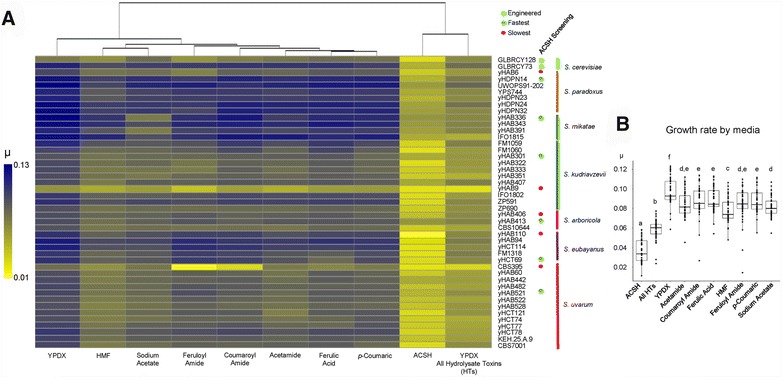Fig. 7.

Saccharomyces strains differed in their responses to hydrolysate toxins. A The average values (n = 2) of maximum growth rate (µ, defined as (ln(OD2) − ln(OD1))/(T2 − T1)) in different media at 28 °C in 96-well plates are shown for the fastest-growing strain of each lineage, the slowest-growing strain of each species, the eight synthetic hybrids, and the two engineered S. cerevisiae reference strains. Heat colors from yellow (low growth rate) to blue (high growth rate) are scaled according to left bar. Engineered, best-growing, and worst-growing strains during ACSH screening are represented by light blue, green, and red dots, respectively. Colored bars represent the species designations. Media conditions are clustered by Euclidean distance. B Maximum growth rate boxplots by media condition. Median values for all media are represented by horizontal lines inside the boxes, and the upper and lower whiskers represent the highest and lowest values of the 1.5 * IQR (inter-quartile range), respectively. Letters are Dunn’s test homogeneous groups inferred after pairwise comparisons
